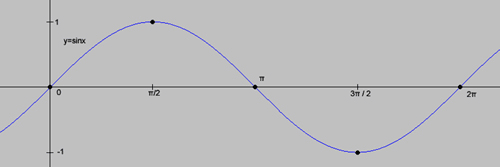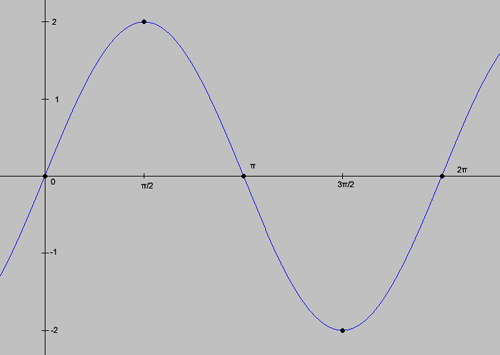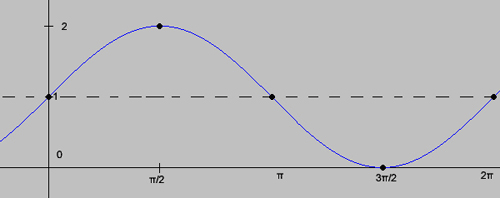Sine and Cosine Functions |
The basic function for a sine curve is y = sin x.
|
Explanation of the Variables |
The standard function with the four variables is:
y =A + B sin (C (x – D))
A: controls the vertical shift of the function
|B|: controls the amplitude (shrink/stretch factor)
C: controls the period of the function (in Radians
or Degrees)
D: controls the horizontal shift of the function
|
Sinusoidal functions have four variables, which control
its cycle length (the time in Degrees or Radians that
it takes to complete one full cycle), one that controls
its amplitude (how high and low the function can get,
its vertical stretch), one controls the horizontal shift,
and finally, one controls vertical shift.
|
If the A value is the vertical shift, so for example,
if the A value is –4, the function’s axis
is transposed down 4. The amplitude is controlled by
the B value. The amplitude of y=A sin X and y=A cos
X represents half the distance between the maximum and
minimum values of the function is given by Amplitude
= |B|
To find a function’s period, you use this function
For radians: 2 /
C /
C
For Degrees: 360°/ C
But remember that C is not the cycle length, 2 /C
or 360°/ C is! /C
or 360°/ C is!
The horizontal shift is controlled by the D variable.
The inverse of the D value is the functions horizontal
shift
|
| Standard function: Y=sinx |
 |
Double period: y=sin (X/2) |
.gif) |
Double amplitude y=2sinx |
 |
y = sin(x+  ) ) |
 |
y= 1+sinx |
 |
Continue.... |


.gif)


